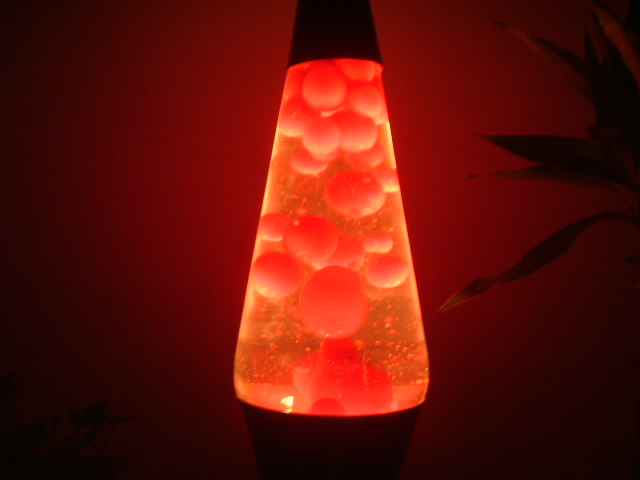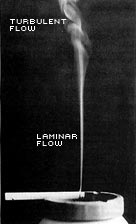Sunday, November 13, 2011
Marshmallow in microwave
We were eating dessert with my roommate tonight, and decided to heat up marshmallows with chocolate. When heated in the microwave, the marshmallow expanded instead of melting. This is because marshmallows are made of foamed sugar. When it is heated, the water in the foam heats up and the trapped air in the foam causes the marshmallow to expand. When the microwave stopped, the marshmallow collapsed because the air was no longer being heated.
Saturday, November 12, 2011
Lava lamps
My roommate has a lava lamp and I became mindful of how they work. Lava lamps have colorful wax in them; this wax floats around in a clear liquid. The wax moves up and down due to the heat in the lamp. When the wax heats up, it becomes less dense than water because wax expands when it is heated. The wax becomes more fluid and floats to the top of the lamp, where it cools down and then descends.
Friday, November 11, 2011
Momentum in ice skating
I was watching figure skating today, and was noticing the different positions that the skater assumes when spinning. When the girl wanted to spin faster, she would pull her body together and keep her arms and legs close together. This way, she maintains the same angular momentum. As she wanted to slow down, she would pull one of her legs out and stretch her ams out wide. By stretching out her arms, she enlarges her moment of inertia and therefore slowing down.
Thursday, November 10, 2011
Anti-static dryer sheets
As I was thinking of how static builds up in a dryer, I thought of ways to stop the static. One method is dryer sheets. The material in these sheets are positively charged. The positive charge balances out the charges between the clothes when they are rubbing and tumbling in the dryer. Fabric softeners also work. They are usually positively charged and create a lubricating layer on the clothes which acts as an anti-static agent.
Wednesday, November 9, 2011
Static electricity in the dryer
Today, as I was taking my towels, out of the dryer, I noticed that they had static electricity. After a little research, I noticed that one of the reasons for this might be because of detergent that is left in the clothes after they come out of the washer. The detergent is removed from the clothes during the drying process, and the removal of these particles may create static electricity. Also, the rubbing of the towels against each other might have created polarity in between them, creating static electricity, which is why I got shocked when I removed the towels from the dryer.
Tuesday, November 8, 2011
Lightning
Today, I became aware of how lightning forms during a storm. Thunderstorms usually come after hot days. Warm, moist air rises quickly and forms comulonimbus clouds. Inside the clouds, water droplets and ice particles rub and hit against each other, creating static electricity. Positive chargers accumulate at the top of the clouds, and negative charges accumulate at the bottom of the cloud. The ground is positively charged. Electricity flows in between the ground and the clouds, creating a difference in electricity. When this difference is too big, it is released in the form of lightning.
Monday, November 7, 2011
Beer foam
I saw someone pouring beer into a glass today, and noticed that a lot of foam was formed. This is because when the liquid is poured quickly into another container, carbon dioxide is released. Carbon dioxide can be formed as a by product during the making of beer. The glass into which the beer is poured is also a factor in the formation of foam. When the glass is nonporous, it tends to retain more oil, and when the beer comes in contact with the oil, it bubbles will then stick to the glass' surface instead of rising to the top, thus reducing the amount of beer foam.
Sunday, November 6, 2011
Fuzz in a tennis ball
Today during practice, I became aware as to why a tennis ball is fuzzy. The fuzz is a product of the felt on the outside of the ball. This is done to produce drag on the ball to slow it down. With the newest technology in tennis rackets, professional tennis players are hitting the ball at great speeds. The fastest recorded serve is 251km/hour! The felt acts as a dampener when the ball bounces so that the ball doesn't bounce too high or too quick. Without the felt, the game would probably be too fast for professional tennis players. When a ball looses the fuzz on it, it becomes more bald, and starts to bounce quicker and higher, making it more difficult to control.
Ski Jump
I saw a picture of a skier (snow skier) today and saw that when he was airborne, he leans forward and pins his arms to his sides. This is done to reduce air resistance. The leaning forward creates a positive angle of attack against the wind, and being in a straight line with arms and ski poles pinned to the body minimizes air resistance and air drag
Saturday, November 5, 2011
Dimples in the golf ball
Today, I became mindful of why a golf ball is is shaped the way it is (specifically, why it has the dimples on it). When the club strikes the ball, the ball takes off with backspin on it. The ball pushes down on the air, so air must push up on the ball for it to continue moving. The dimples help to carry the air along with the ball and make the air follow the curvature of the ball. Without its dimples, the ball would not travel as far as it does.
Friday, November 4, 2011
Flow in cigarette smoke
I saw a cigarette on an ash tray today and noticed how the smoke moved. Close to the cigarette itself, the smoke moved in laminar flow. As the hot gas continued to move up in the air, it turns into turbulent flow. It turns into turbulent flow as its Reynolds number and its velocity increases.
Thursday, November 3, 2011
Blowing air in bottles
Today, I blew on the top of a glass bottle and realized that I could make sounds by doing this. This is because when I blew, I created a jet of air that was moving into the bottle. Pressure builds up in the bottle, until the pressure pushes the jet of air back out. The air that is moving out decreases the pressure in the bottle. This creates a vibration, creating the sound.
Wednesday, November 2, 2011
Pressure: Force per Unit Area
Today, I found a tack in my room. As I was pushing against my cork board, I became aware that the pressure is greater at the tip of the tack, than at the blunt end. One would think that it is just because of the pointy end, but it's a little more than that. The area in the blunt end is greater than at the pointy end. This makes pressure decrease in the blunt end. The equation for pressure is force per area. This means that even if the same force is applied, if the area is greater, the pressure created will be decrease. This is why putting force at the blunt end of a tack hurts less and creates less pressure on the finger.
Tuesday, November 1, 2011
Floating helium balloons
While thinking about helium, I became mindful of why helium balloons float, while air balloons that we blow up ourselves don't. The main factor is that helium is less dense than air (air contains nitrogen and oxygen). Helium is also lighter than air. Just like heavier things tend to sink, and lighter objects float, the lighter helium balloon will float and rise when it is in air.
Subscribe to:
Comments (Atom)









